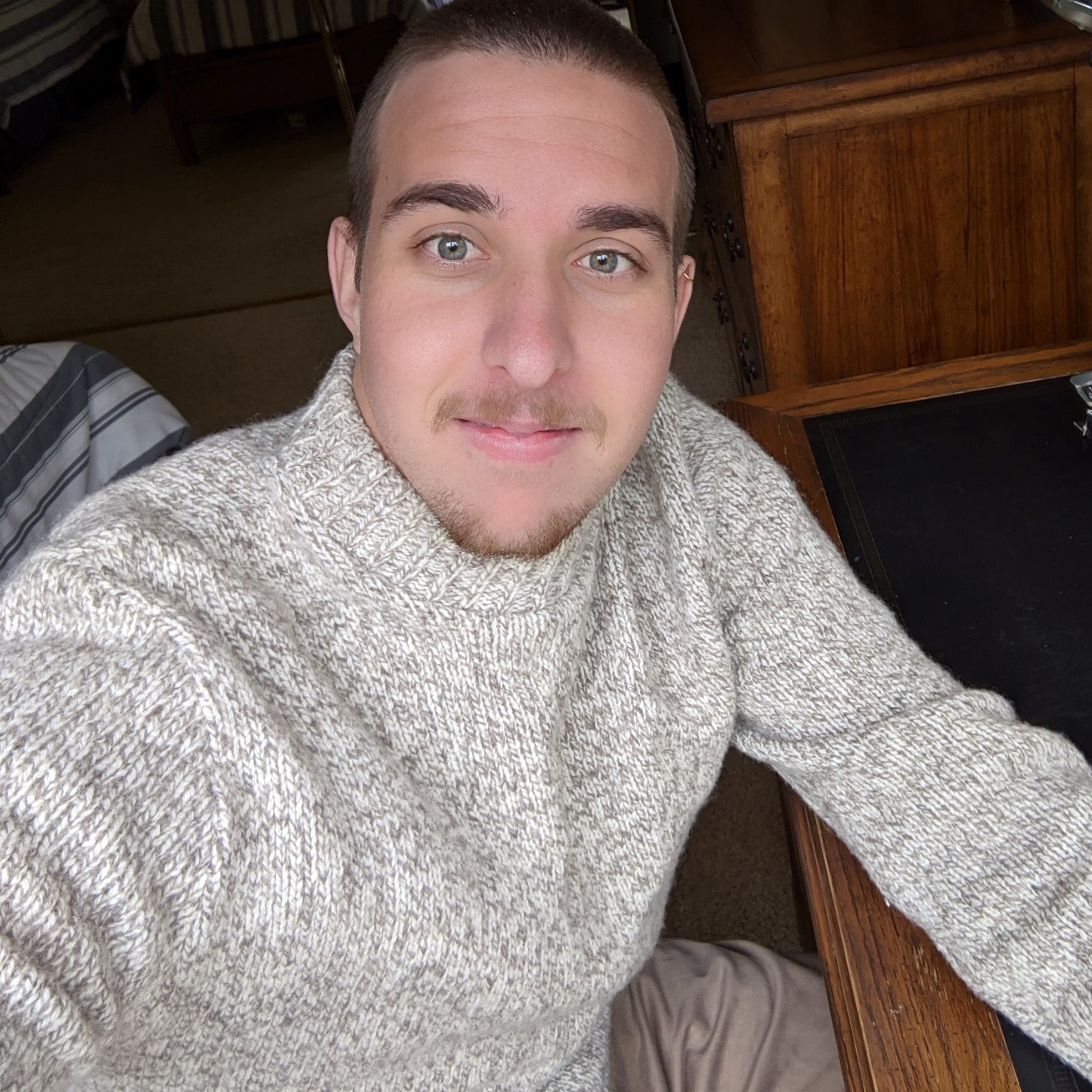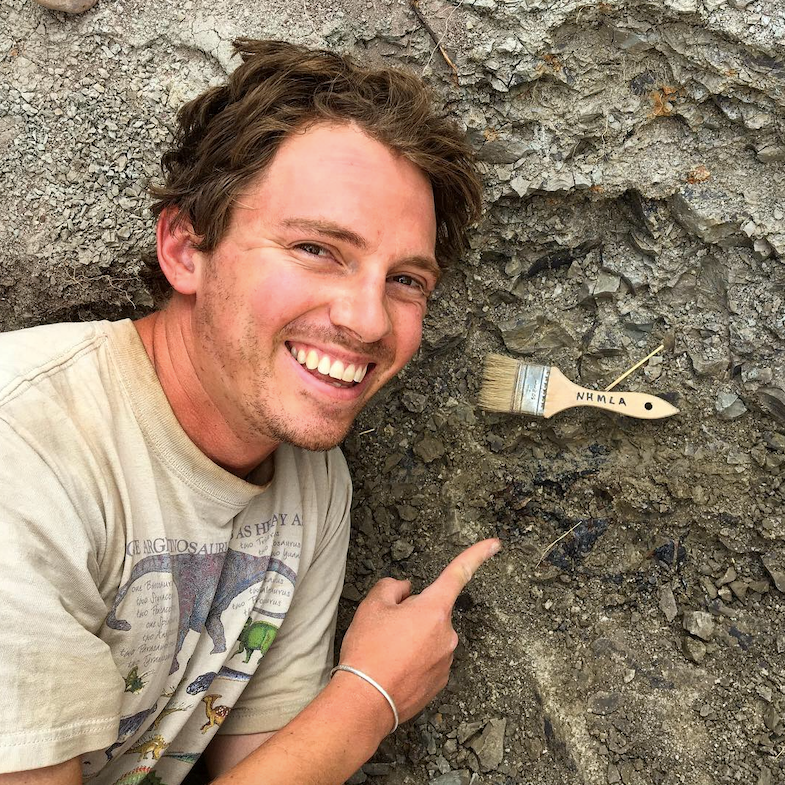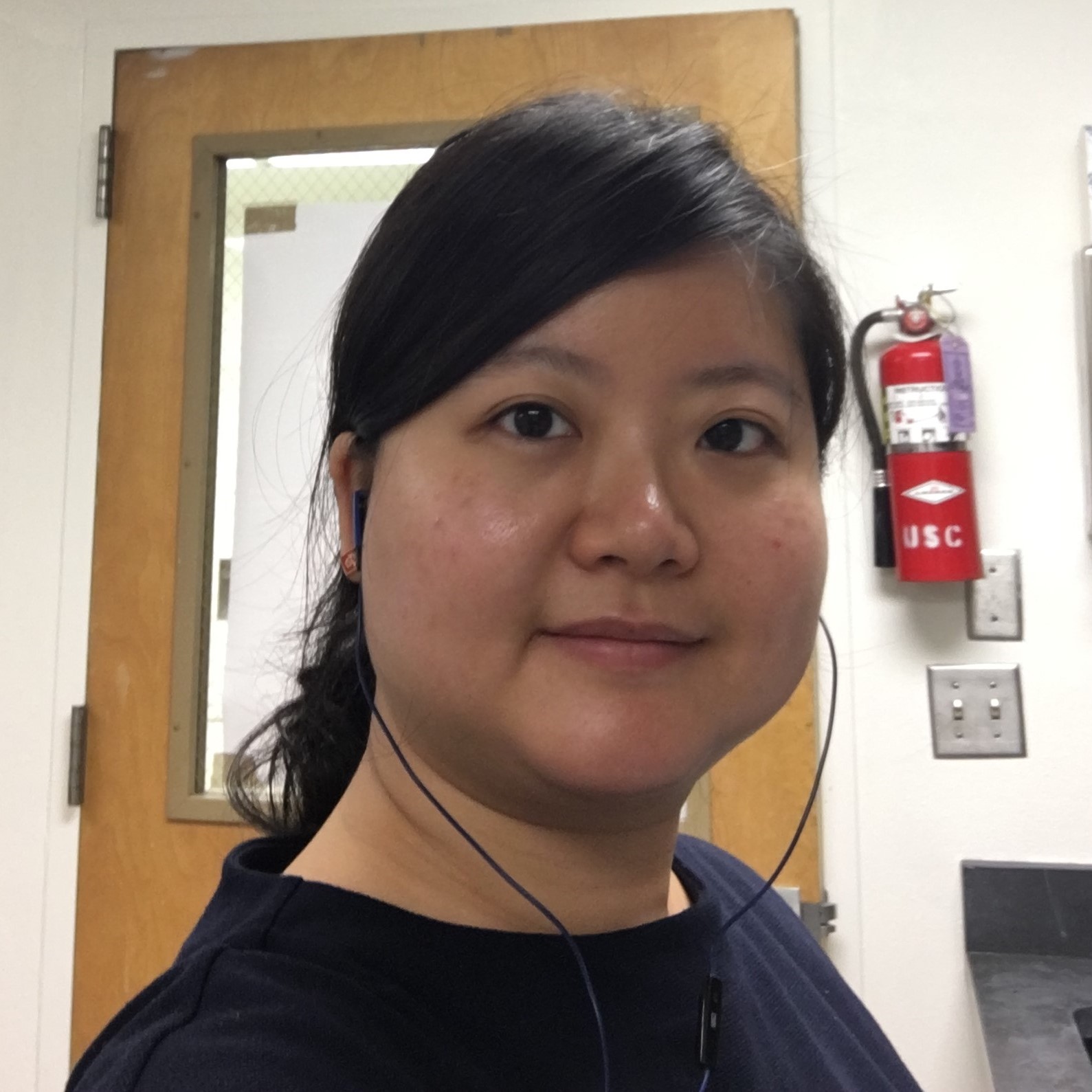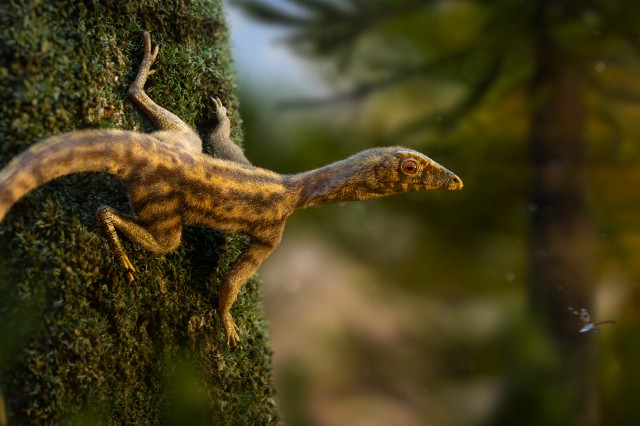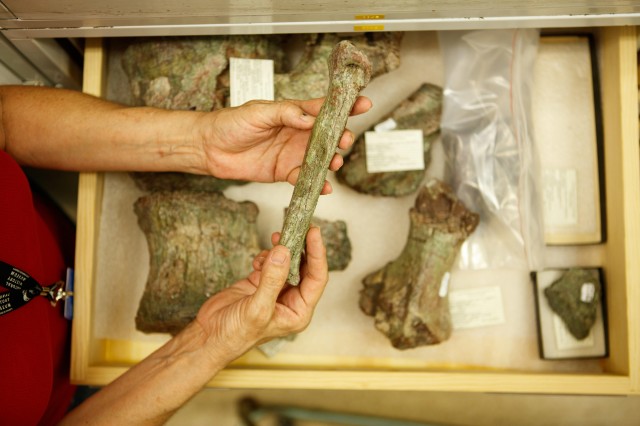The DIG - December 2020
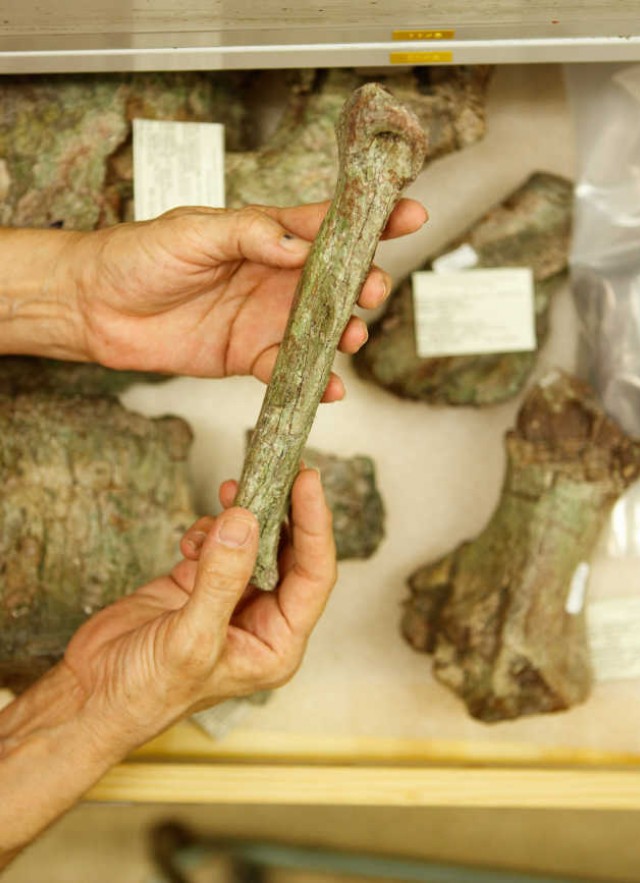
The DIG - December 2020
Welcome to the Dinosaur Institute Gazette!
Every quarter, our team will be putting together this update to provide you with recent news of the exciting work taking place in the DI. Each issue will include a focused, main story, a featured fossil, and a blast from the past. Plus, we will be offering some unique virtual events, where you can learn more about our activities and connect with our team. In this issue, I want to introduce you to our graduate students. As we are all looking at the future, after a year of great uncertainty, Nate and I continue to mentor our graduate students, training them for their future professional lives. We wish you safe and happy holidays and a brighter 2021!
Watch Dr. Luis Chiappe introduce the first edition of the DIG!
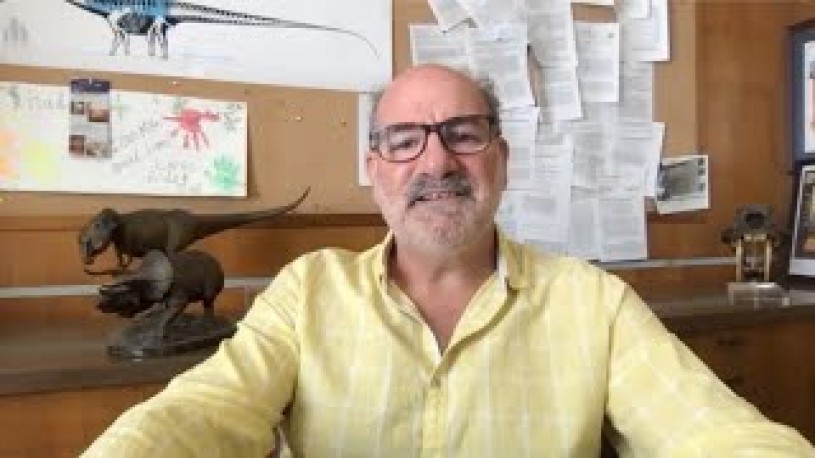
Meet Our Graduate Students
One of our goals in the Dinosaur Institute is to train the next generation of scientists and natural historians, and mentoring graduate students is an important way we build this pipeline and expand our program’s reach. Currently, Dr. Luis Chiappe and Dr. Nate Smith are advising five Ph.D. students pursuing their degrees at USC. These students work very closely with Luis and Nate, having desks at NHMLAC, using our collections, and regularly joining our field teams. . The funding that we raise from research grants and donations supports these students’ graduate stipends as well as their research and work in our collections.
Paul Byrne
I am a Ph.D. student at the Univesity of Southern California and Graduate Student-in-Residence at The Dinosaur Institute, where I work with Dr. Nate Smith and Dr. Luis Chiappe. My research interests focus on the origin and variation of postcranial skeletal pneumaticity (air-filled bone) in ornithodirans (dinosaurs and pterosaurs). I make use of many of the incredible specimens in the Dinosaur Institute to perform high-resolution CT scans, in partnership with the Keck School of Medicine at USC. In addition to this primary focus, I also am working to better understand the aquatic locomotion and biomechanics of a group of early sauropterygian marine reptiles, the pachypleurosaurs. I also participate in fieldwork at the Gnatalie Quarry in Utah to collect rare Jurassic dinosaurs. These opportunities would not be possible without the help of our donors.
Nathan Carroll
I first came into contact with dinosaurs and the Dinosaur Institute when I was in high school, working on my family's ranch in Ekalaka, Montana. Those early experiences inspired a life-long pursuit to learn as much as I can about dinosaurs and the world that they lived in. I am currently researching what types of feathers extinct dinosaurs were covered in, and how they differ from birds today by examining three-dimensional fossil feathers preserved in amber and coprolites. This work heavily relies on CT scans and our digitization resources and software at the museum.
Kiersten Formoso
I am a Graduate Student-in-Residence at The Dinosaur Institute, and Dr. Luis Chiappe and Dr. Nate Smith serve on my Ph.D. committee at the University of Southern California. My research focuses on the biomechanical changes of the land-to-sea evolutionary transition of once completely land-dwelling marine tetrapods like mosasaurs, whales, plesiosaurs, and seals as these groups evolved to live in the water. The wonderful collections of the Dinosaur Institute house tons of marine reptile fossils like mosasaurs and plesiosaurs and the NHMLAC also has the largest marine mammal collection in the world. I am actively using both these fossil and modern collections for my research. I traveled across the country from New Jersey to join the Ph.D. program at USC and the Dinosaur Institute, and feel right at home as part of the NHMLAC.
Hank Woolley
I am in my 4th year as a Graduate Student In-Residence at The Dinosaur Institute, conducting field and collections-based paleontological research in support of the DI’s programs, in addition to earning my Ph.D. degree at the University of Southern California. My research uses the collections of fossil lizards and snakes in The Dinosaur Institute and NHMLAC to characterize the various biological, geological, and human-based collecting biases that influence our understanding of evolutionary history in the fossil record. By understanding the nature of these biases, we can make the most of the information contained within the fossils not only in our own drawers and cabinets at The Dinosaur Institute but also at natural history museums worldwide. I hope that my research will highlight the power of natural history museums as treasure troves of scientific data, and as invaluable resources for understanding the nature of our current biotic and environmental crises.
Becky Wu
Studying Mesozoic birds has always been my dream career, but growing up in Taiwan, I did not have many opportunities to do so. Now with the help from Dr. Luis Chiappe and the Dinosaur Institute, I have been visiting Mesozoic bird collections from the famous Jehol Biota, assessing the inner structures of bird jaws with high resolution micro-CT scans, and revealing the tooth cycle and dental replacement patterns across Enantiornithines and Ornithuromorpha. Luis has provided tremendous support to help me access specimens and micro-CT data. The Dinosaur Institute provided necessary support for CT scans, computational equipment, and 3D imaging software, which are critical for analyzing the 3D data. In addition to the fossil data, I also use modern American alligators to understand the control mechanisms of tooth cycling in archosaurs, with a focus on the control of the alternate dental replacement pattern. I am passionate about sharing the science I love and hope my involvement will help the academic community reach out to people from different cultures and backgrounds.
See photos from the excavation site at Ghost Ranch
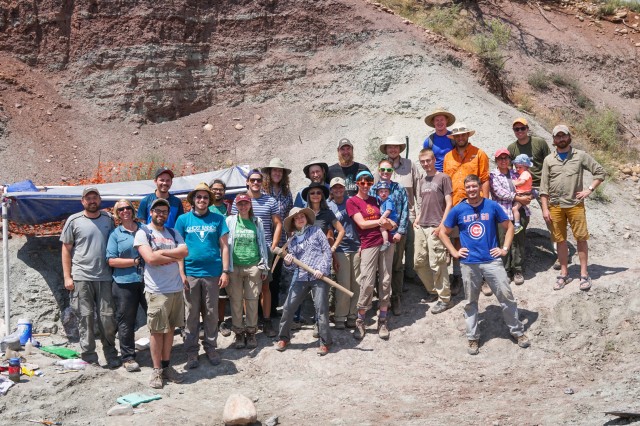
The 2017 Ghost Ranch expedition crew poses in front of the Late Triassic Hayden Quarry. Each summer this dig hosts a diverse group of researchers, students, volunteers, and visitors.
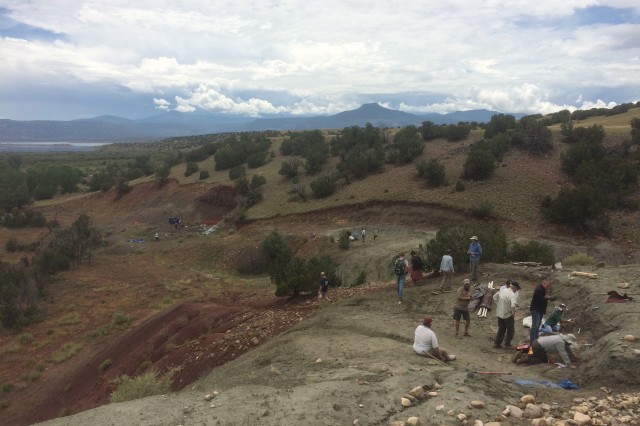
An overview shot of the three main excavations at the Late Triassic Hayden Quarry site in Ghost Ranch, NM. The Cerro Pedernal, a source of inspiration for many of Georgia O'Keefe's paintings, can be seen in the background.
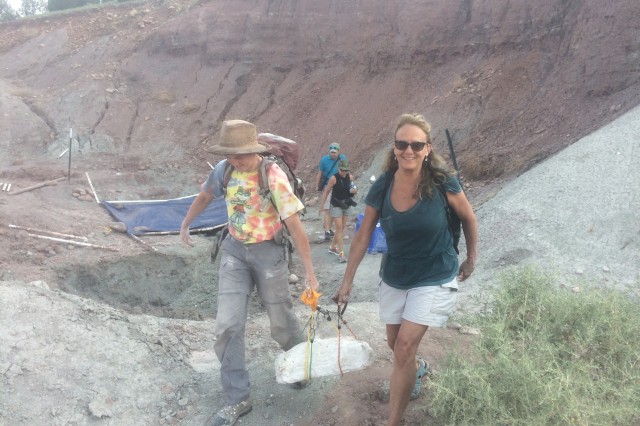
Emily Lessner and Sheila Brennan haul back a fossil jacket full of numerous large phytosaur teeth. The semi-aquatic, long-snouted phytosaurs were apex predators during the Late Triassic.
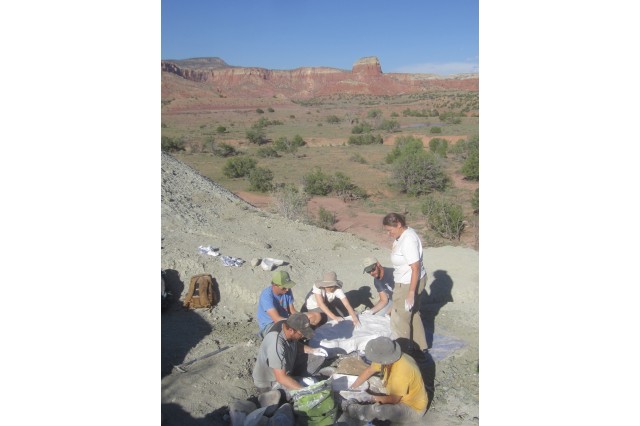
Field crew work on plastering a large fossil jacket at the Hayden Quarry in Ghost Ranch. Orphan Mesa can be seen in the background.
1 of 1
The 2017 Ghost Ranch expedition crew poses in front of the Late Triassic Hayden Quarry. Each summer this dig hosts a diverse group of researchers, students, volunteers, and visitors.
An overview shot of the three main excavations at the Late Triassic Hayden Quarry site in Ghost Ranch, NM. The Cerro Pedernal, a source of inspiration for many of Georgia O'Keefe's paintings, can be seen in the background.
Emily Lessner and Sheila Brennan haul back a fossil jacket full of numerous large phytosaur teeth. The semi-aquatic, long-snouted phytosaurs were apex predators during the Late Triassic.
Field crew work on plastering a large fossil jacket at the Hayden Quarry in Ghost Ranch. Orphan Mesa can be seen in the background.
Featured Fossil
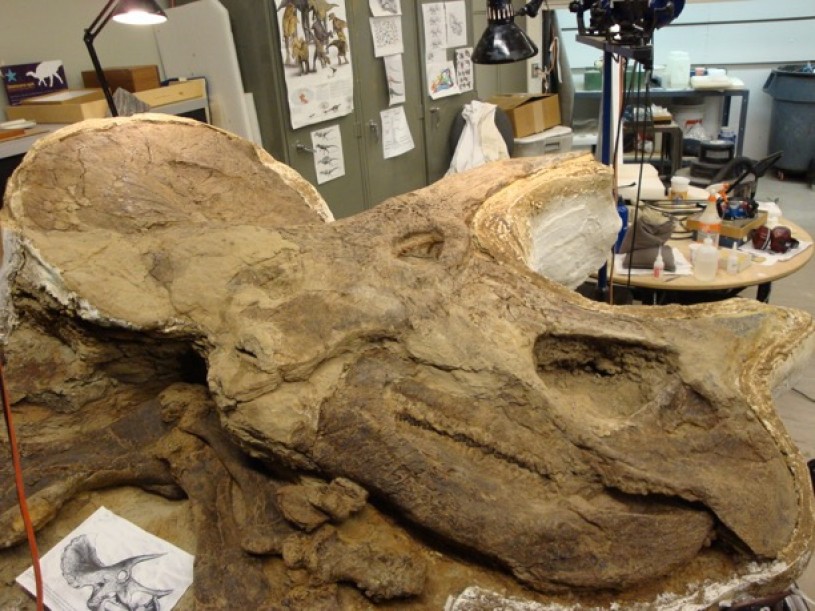
Triceratops Skull being Prepared in the Dinosaur Lab
This block was about 4000 pounds out of the field and it was reduced to about 1000 pounds, the actual weight of the skull mounted in the Jane G. Pisano Dinosaur Hall.
The Dinosaur Institute is home to thousands of specimens from throughout the world and spanning hundreds of millions of years of dinosaur evolution! Here, you can take a behind-the-scenes peek into our collections to learn more about a unique specimen.
Blast From the Past
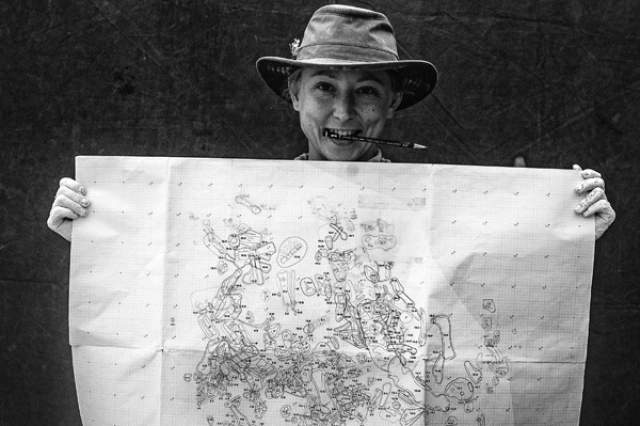
Photo by Craig Cutler

Photo by Craig Cutler
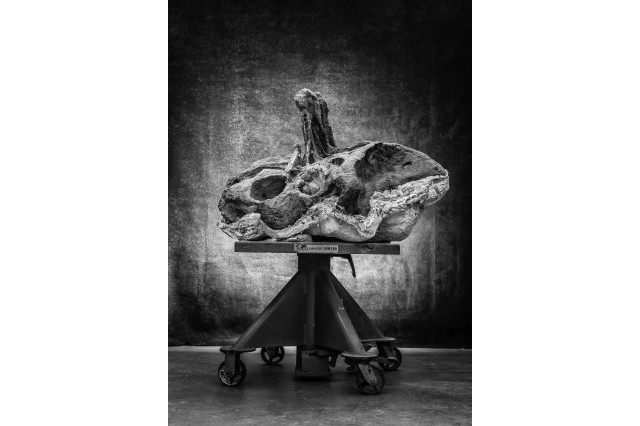
Photo by Craig Cutler
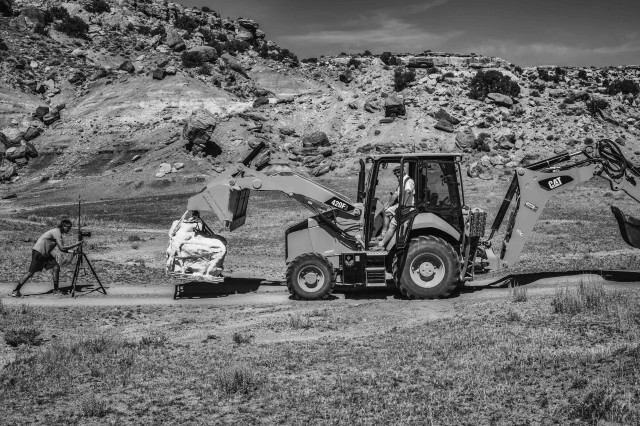
Photo by Craig Cutler
1 of 1
Photo by Craig Cutler
Photo by Craig Cutler
Photo by Craig Cutler
Photo by Craig Cutler
Every summer for the last 10 years, an international team of paleontologists—led by the Dinosaur Institute—has excavated a rich fossil site they named "Gnatalie." Their efforts have unearthed hundreds of bones of colossal dinosaurs—long-necked sauropods, armored and plated dinosaurs, and their predators—in the process crafting a picture of this dusty, dry pocket of southeastern Utah 150 million years ago.
The Dinosaur Institute has an extremely active field program, and has made collections from all corners of the earth, including Argentina, Brazil, China, Kazakhstan, and Antarctica. These projects are funded by grants big and small, as well as by individual donors. We currently have field expeditions collecting from every period of the Age of Dinosaurs (Triassic, Jurassic, and Cretaceous) from throughout the western United States. Fieldwork helps us build our collection, create our museum exhibits, and drive our research, but it also provides unique experiences and transformative educational opportunities for our volunteers, students of all ages, and museum supporters.
Thank you for supporting the Dinosaur Institute
